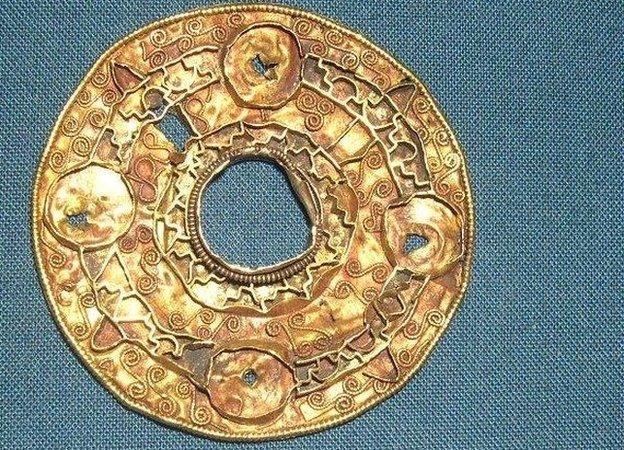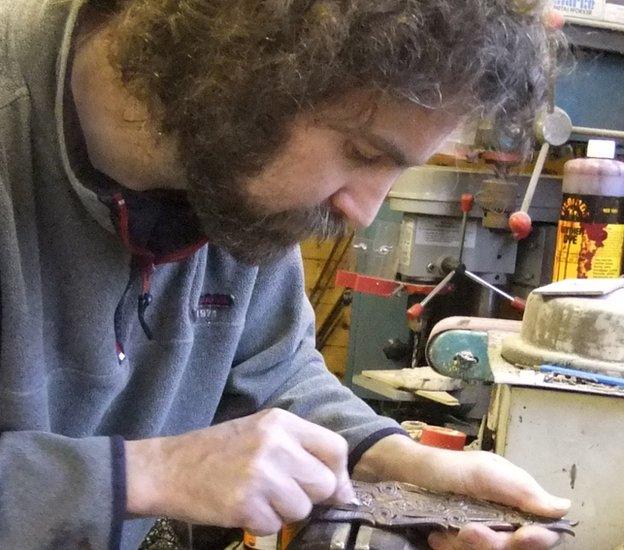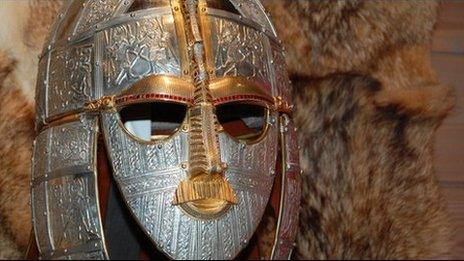Sutton Hoo: Replica of 'plundered' brooch in place at historical site
- Published

The replica brooch has a diameter of about 3ins (8cm) and will go on display soon
A replica of a gold brooch has been created to represent one "plundered" from the Anglo-Saxon burial sites at Sutton Hoo.
The original jewellery was found by a ploughman in the 1840s at nearby Sutton in Suffolk and what is left of it is kept at Ipswich Museum.
Craftsmen Dave Roper has made the replica using gold, silver, bone and garnet stones.
It ties in with the 75th anniversary, external of the burial ship find, in 1939.

The remains of the original 7th Century Anglo-Saxon brooch are on display at Ipswich Museum
The ship was believed to have been the resting place of King Raedwald of East Anglia.
The original brooch dates from the 7th Century and the National Trust, which owns the Sutton Hoo site near Woodbridge, said it had been damaged over the centuries, so that only its gold backing plate remains.
'Grave-robbing'
The ploughman was believed to have taken it to a jeweller in Stowmarket and exchanged it for a set of teaspoons.
Ruaidhri O'Mahony, visitor manager at Sutton Hoo, said: "It's likely the brooch was plundered from one of the mounds as there was a history of grave-robbing dating back to the Tudor period.
"It's definitely a piece of jewellery belonging to someone of immense status and very likely was from the same workshop which created the rest of the treasures at Sutton Hoo such as the shoulder clasp and warrior's helmet."

Dave Roper has created many other replicas for the Sutton Hoo Museum in Suffolk
Mr Roper made the replica in his workshop in Ledbury, Herefordshire.
"The ploughman had described the missing red stones after he sold it, but replicating the rest of it was educated guesswork based on a similar disc-brooch," he said.
"As more research is done it illuminates the so-called Dark Ages.
"The original craftsmen were working to a very high standard which is difficult to surpass in the modern day."
The National Trust is recreating a 1930s garden party at Sutton Hoo this weekend to commemorate the party held by the then landowner Edith Pretty, where she displayed some of the early finds.
- Published10 March 2014

- Published20 November 2010
- Published20 January 2013
